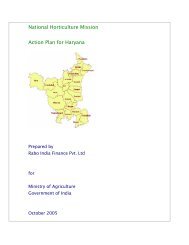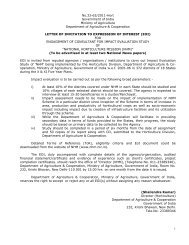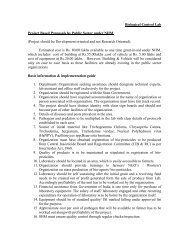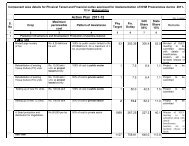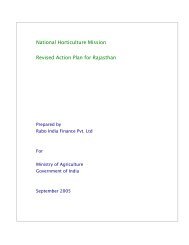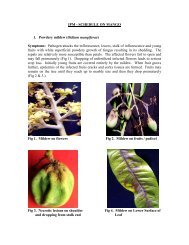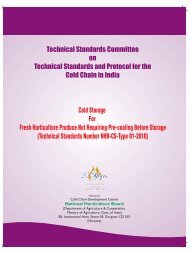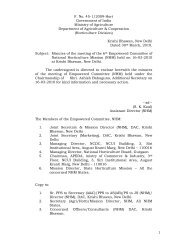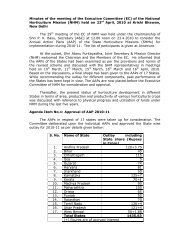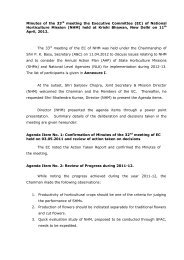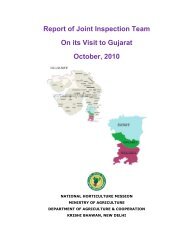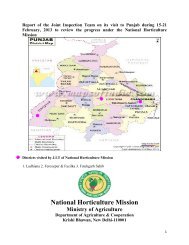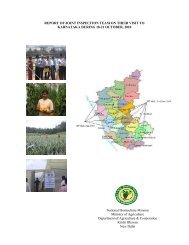IPM SCHEDULE FOR AONLA PESTS National Horticulture Mission
IPM SCHEDULE FOR AONLA PESTS National Horticulture Mission
IPM SCHEDULE FOR AONLA PESTS National Horticulture Mission
Create successful ePaper yourself
Turn your PDF publications into a flip-book with our unique Google optimized e-Paper software.
Fig. 21. Fruit damage by stone weevil Fig. 22. Seed damage by weevil<br />
Management<br />
Deep ploughing of the orchards after harvesting exposes the diapausing larvae<br />
and is effective in brining down the pest population.<br />
First spray of carbaryl (0.2%) or quinalphos (0.05%) at pea size of fruit. Second<br />
spray may be done at fortnightly interval with changed insecticide, if needed.<br />
21. Fruit midge: [Clinodiplosis sp.]<br />
Symptoms<br />
In the beginning, small grey black spots appear at the site of infestation.<br />
It darkens to brown at later stage. The emergence hole is minute but visible easily. The<br />
affected parts of fruit rot because of the damage done by the midge larvae and also fruits<br />
become susceptible to secondary infection by different pathogens. Desi varieties of aonla<br />
are more susceptible.<br />
Incidence of this pest occurs in the fruiting season in aonla from September to<br />
January. Adults are seen on wings in the months of September-October and are<br />
miniature flies. The eggs are laid inside the fruits. Larvae after hatching feed on the<br />
content of the fruits. Immature larvae are creamish-white, while mature are pinkishorange<br />
in colour. The mature larva is about 3-3.5 mm in length and 1 mm in width.<br />
Fully matured larvae jump out of the fruits, drop down in the soil and pupate there. Full<br />
life cycle is completed in 20 to 28 days, with the last larval stage diapausing within the<br />
soil (Fig 23).



